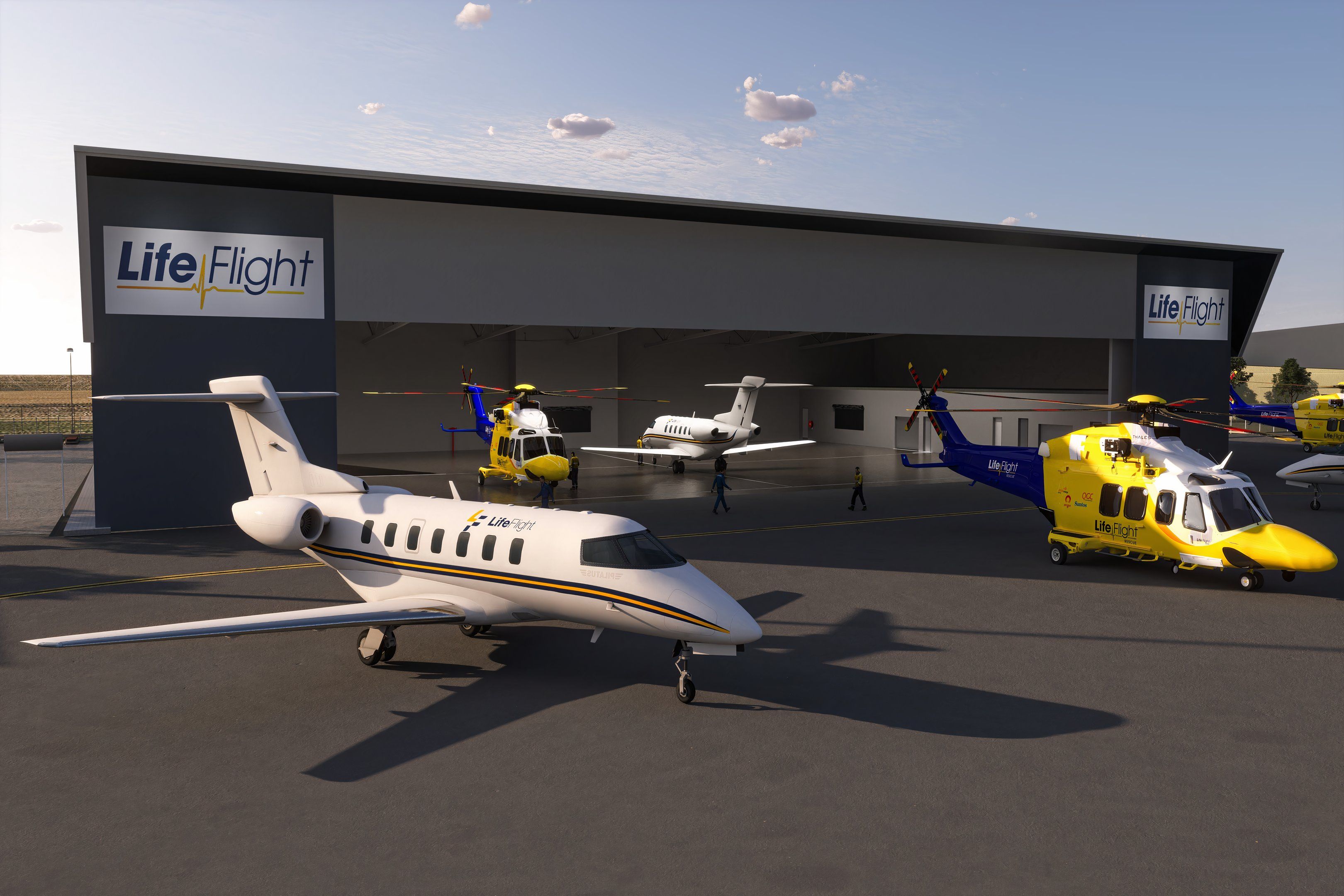Summary Brisbane Airport is constructing a groundbreaking Aeromedical Precinct with state-of-the-art facilities for emergency medical air operations. The new precinct will integrate various aeromedical agencies for seamless patient care and transportation, enhancing services for Queenslanders. The facility will be the largest multi-tenanted property at Brisbane Airport, providing vital 24/7 aeromedical services to rural and remote communities.
Last week, Queensland's Brisbane Airport announced that construction is commencing on the new Aeromedical Precinct located between the airport's two parallel runways. The precinct will be the center for Queensland's emergency medical air operations and have the capacity for 26 fixed- and rotary-wing aircraft. A world-first in Brisbane In the twelve months to June 2024, the Royal Flying Doctor Service (RFDS) flew 4,611 patients to Brisbane Airport (BNE) , while LifeFlight's Air Ambulance jets and helicopters transported 1,080 people in need.

A new patient transfer facility will care for people transitioning between aircraft and road ambulances within the precinct. The aeromedical facility, conveniently sited between the two parallel runways for quick access, will include 18,700 square meters (201,000 sq feet) of hangar and headquarters space, 17,800 square meters (192,000 sq feet) of tarmac parking and car parking for 450 staff. Brisbane Airport CEO Gert-Jan de Graaff pointed to the depth of the project: "There's nothing like the scale of Brisbane Airport's Aeromedical Precinct anywhere in the world.
This groundbreaking project will significantly enhance the level of care for Queenslanders needing urgent treatment in Brisbane." Brisbane Airport is embarking on a major transformation that will turn the domestic terminal into a world-class experience. Each day, around 18 patients are flown in and out of Brisbane Airport, and when the new facility is completed in late 2026, they will be transferred through the transfer hub.
Currently, the RFDS , LifeFlight and other emergency agencies are spread across the airport and will be brought together within the new precinct. A vital service at BNE The facility will integrate and collate aeromedical retrieval and transport, clinical and logistical coordination, including statewide telehealth clinical and education support to rural and remote hospitals. The AU$217 million ($145m) center will be the largest multi-tenanted property built by Brisbane Airport, and de Graaff said he is delighted that its sole purpose is to serve the people of Queensland in every corner of the state.
"Brisbane Airport provides a vital 24/7 connection for Queenslanders in regional, country and remote communities who need critical care. We want to commend the Queensland Government for its very strong support of the aeromedical precinct." Queensland's Brisbane Airport has found an effective way to keep surrendered items out of landfills and put them to good use in the community.
The Royal Flying Doctor Service delivers care to more than 330,000 Australians every year, including aeromedical retrieval, primary and preventative health care, telehealth and mental health services. The RFDS network includes more than 2,000 landing airstrips across Australia, many of which are used regularly and others purely for medical visits. The RFDS uses five aircraft types for aeromedical operations, including the Pilatus PC-12 and PC-24 , the King Air B350 C and B200 C and the Beechcraft King Air 360CHW turboprop aircraft.
The service has a growing fleet of more than 80 aircraft, and each must undergo an extensive fit-out after purchase to be equipped to handle any emergency. For example, the Pilatus PC-12 is set up with two stretcher beds and three seats, which can be used in a variety of configurations. The front door allows the pilot to do pre-flight inspections and enter the aircraft without disturbing the medical crew and patients in the rear of the plane.
The cockpit is configured for single-pilot operations in all weather conditions. Instrumentation includes enhanced ground proximity warning and navigation systems, as well as global positioning systems and data displays from ground-based navigational aids. A flight nurse is usually on every flight, and when needed, a doctor is also onboard.
LifeFlight is a Queensland-based world leader in aeromedical care that operates both fixed-wing and rotary-wing aircraft. It has four Challenger 604 medically configured jets on 24/7 standby at bases in Brisbane, Townsville and Singapore. It also has a fleet of 11 rescue helicopters, including seven AW139s, three B412s and one BK117.
Two of the AW139s operate under a contract with a consortium of gas companies. The Aeromedical Precinct will be targeting 5 Star Green Star accreditation and includes a 400kW solar system. It will also have a cafe to support the more than 400 people working there, and during the construction phase, it will employ around 150 people on-site.
.



















